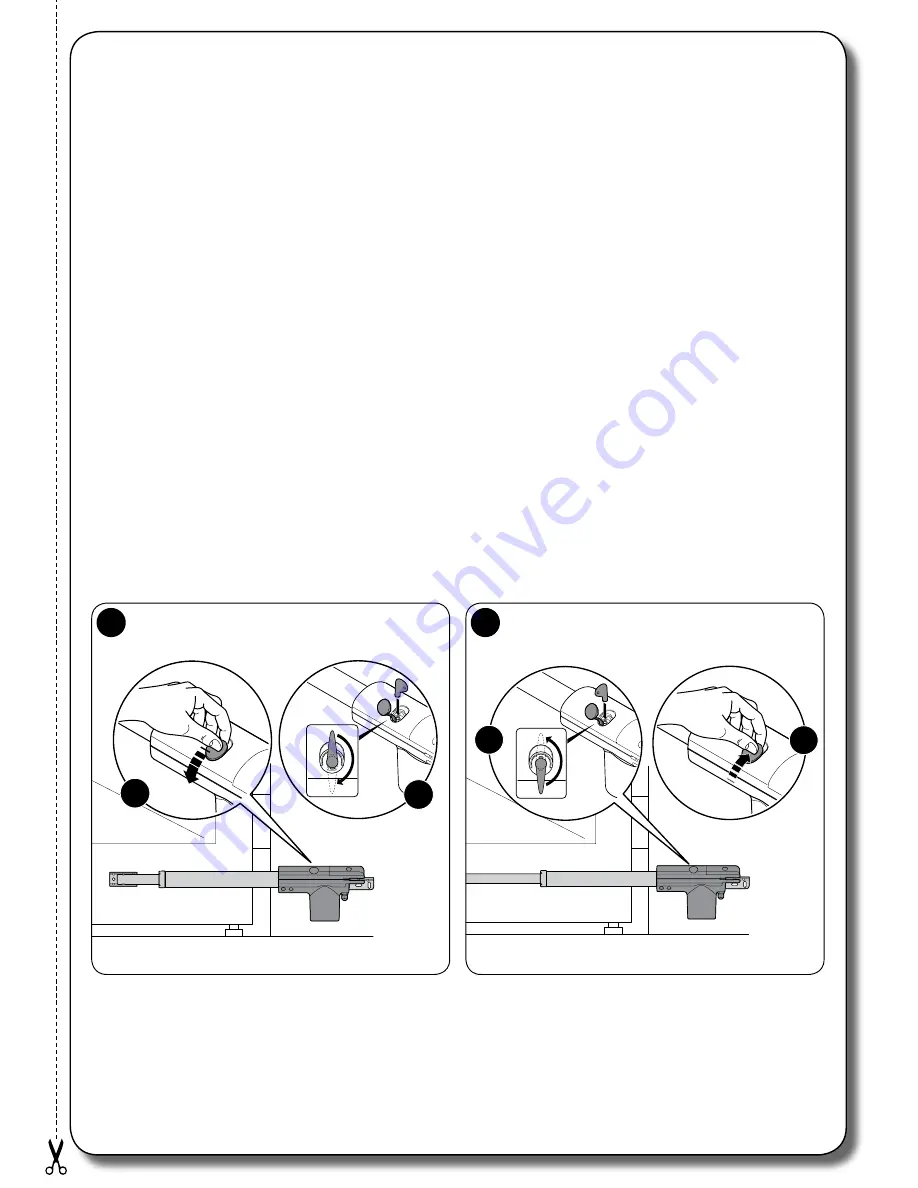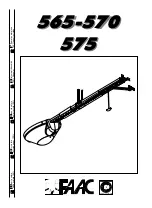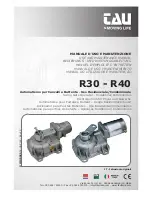
English –
13
Operation manual
(to be given to the final user)
•
Before using your automation system for the first
time,
ask the installer to explain the origin of any residual
risks; take a few minutes to read the user
manual giv-
en you by the
installer. Keep the manual for consultation
when in doubt and make sure it is passed on to any new
owners of the automation.
•
Your automation system is a machine that will faith-
fully execute your commands;
unreasonable or improp-
er use may generate dangers: do not operate the system
if there are people, animals or objects within its range of
operation.
•
Children:
automation systems are designed to guaran-
tee high levels of safety and security.They are equipped
with detection devices that prevent movement if people or
objects are in the way, guaranteeing safe and reliable acti-
vation. However, children should not be allowed to play in
the vicinity of automated systems; to prevent any acciden-
tal activations, keep all remote controls away from children:
they are not toys!
•
Faults:
if you notice that the automation is not function-
ing correctly, disconnect the electrical power supply from
the system. Never attempt any repairs; contact your local
installer for assistance. The system can be operated manu-
ally: release the gearmotor, as described in “Manual release
and lock”.
•
Maintenance:
As with all machinery, the automation
requires periodic maintenance to ensure optimal operation,
extended lifetime and complete safety. Arrange a periodic
maintenance schedule with your installation technician.
Nice recommends that maintenance checks be carried out
every six months for normal domestic use, but this interval
may very depending on the intensity of use. Only qualified
personnel are authorised to carry out checks, maintenance
operations and repairs.
• Do not modify the system or its programming and adjust-
ment parameters in any way, even if you feel capable of
doing it: your installation technician is responsible for the
system.
• The final test, periodic maintenance and any repairs must
be documented by the person who has performed them;
these documents remain in the custody of the owner of the
system.
The only recommended
maintenance operations that
the user can perform periodically are the removal of leaves
or debris that may impede the automation.
Before proceeding,
release the automation
(
fig. A
) and
disconnect all power supplies
(including the backup
battery, if present).
•
Disposal:
At the end of the automation’s lifetime, ensure
that it is disposed of by qualified personnel and that the
materials are recycled or scrapped according to local regu-
lations.
•
Manual release and lock
- Releasing the gearmotor: (fig. A)
- Locking the gearmotor:
(fig. B)
a
b
B
a
b
A
Summary of Contents for TOO3000
Page 2: ......


































